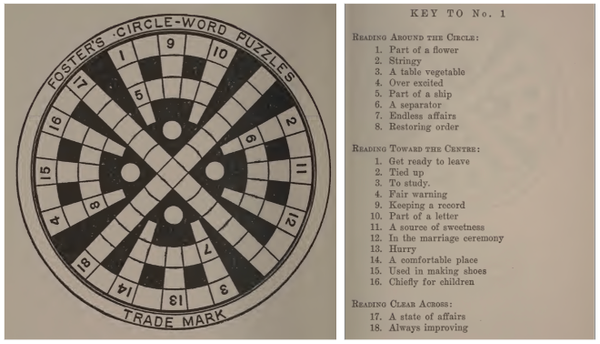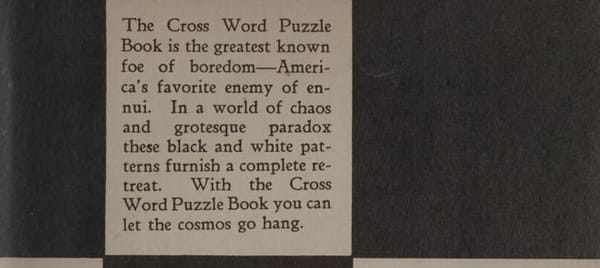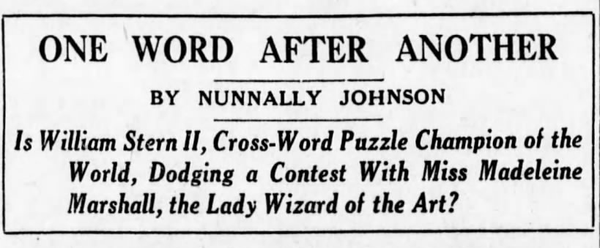May 4, 1924: Cross Word Puzzles Embalmed Between Covers

A hundred years ago today a venerable tradition began: the New York Times pooh-poohing crosswords.
The puzzles were dead on arrival, per the Times; "Cross Word Puzzles Embalmed Between Covers," went the title of the paper's review of April's The Cross Word Puzzle Book. Many more takedowns of the crossword would follow in the Grey Lady; the paper would be the last major daily without a puzzle, holding out until 1942. As I write in my forthcoming book, this first salvo deploys tropes the Times would return to: disease, childishness, the need for individual will to overcome collective infirmity.
The crossword craze was an epidemic, "as catching as the 'flu,' and as certain in its conquering power." Something tumorous had wormed its way into the nation's cortex — a "peculiar stimulus on the mass mind ... that gathers in all but the strongest, or should one say the most obstinate, minds." Not very long after the mass death of the Great War and the Spanish flu — events in which many had had to grow up much more quickly than expected, sent off to fight or forced into caretaking roles when family died — the crossword was another of these games pressing "the whole world" into regression: "its second childhood."
The Times would try to be the only adult in the newsroom, and forbade the paper until 1942 from publishing not only crosswords but comics. As we'll see, when it did relent, war was again the backdrop. The Times added a crossword following the horrors of Pearl Harbor. Margaret Farrar, who would become the first puzzle editor at the Times, wrote a memo to Lester Merkel, then the Sunday editor: "I don’t think I have to sell you on the increased demand for this kind of pastime in an increasingly worried world. You can’t think of your troubles while solving a cross word."



